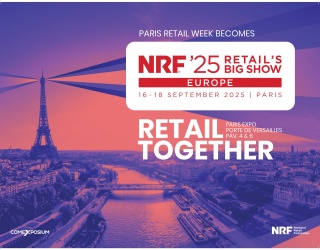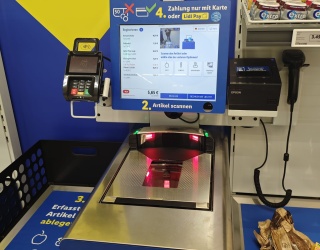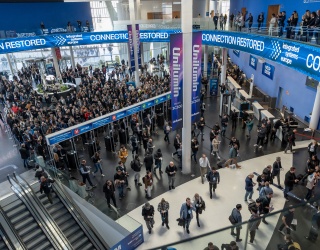
Dr. Weber, there is currently a lot of heated debate in the industry about the EU Regulation. Can you briefly explain what it specifically contains and how the Regulation will affect retail in your opinion?
The design of the national implementation of the EU Regulation is of utmost importance for the industry. The pricing model will influence the acceptance and future of credit card and mobile payment options. On the one hand, fees are drastically capped and the profit incentives for new market participants will decrease. On the other hand, the Regulation will make card-based payment options more attractive to retailers, especially when compared to cash payments. It is expected that more retailers will offer card-based payment options in the future since their costs will be lowered sustainably.
The public debate is fueled by the percentage cap in the fee structure (0.2 percent for debit and 0.3 percent for credit cards). This so-called interchange fee is just one component of the total charges retailers need to pay for the international payment methods (e.g., Visa or MasterCard). In addition, retailers need to pay fees to the credit card organizations (“scheme fees” e.g., to Visa or MasterCard) as well as a fee to their own payment services provider, the so-called acquirer. The fees to the credit card organizations and the acquirer are not a part of to the EU Regulation and are therefore not subject to any regulation.
Currently there is a heated debate as to what extent national payment methods in Germany, the EC cash method with the Girocard (debit card) as well as electronic direct debits are included in the Regulation. These very common and cost-effective methods for retailers do not exhibit varying cost components and were so far charged a standard percentage fee of the purchasing price, for instance, 0.3 percent in the case of the Girocard. Previously, there was a fixed lower price limit to ensure that payment service providers are still able to break even given even very small purchasing amounts. In the case of the Girocard, that’s 8 cents per transaction.
With the upcoming national implementation of the EU interchange fee regulation, the German legislator under the auspices of the German Federal Ministry of Finance needs to decide on fee caps for Girocard and ELV. Here it is strongly suggested to take the different price structures of national and international payment methods into account.
What are the distinct features of the national German payment methods?
Germany continues to be a country where most people like to pay with cash. It is not sufficient if retailers simply provide more card-based payment methods in the future or expand the mobile payment options. Consumer willingness to make cashless payments needs to increase. The way to success is primarily paved through a simple and intuitive design of payment methods (convenience) and a certain “coolness factor".

One risk with the national implementation of the EU Regulation on Interchange Fees for Card-Based Payment Transactions could be that in the debate the regulated final price for retailers for Girocard and ELV is being equated with the regulated interchange fees for international payment methods, even though the latter only make up a portion of fees paid by retailers.
If - spurred on by cost reduction requests of German retailers- the fees for Girocard and ELV are now being lowered to a level that no longer covers costs, the existence of these payment methods comes into question. And without the competition of national payment methods, the door is wide open for possible fee increases in the non-regulated scheme fees of Visa and MasterCard.
In your point of view, what effects will the Regulation have on the percentage of card-based and cash payments?
The willingness of consumers to pay with credit cards depends- among other things- on whether and how much fees they will be charged for their cards (whether you need to pay an annual fee for instance). This is where the Regulation comes into play. Thanks to the scheduled cap on interchange fees, credit card issuing banks lose a significant source of revenue. The big question now becomes how they compensate for these losses in the future.
I don’t assume that issuers will pass their losses entirely on to the consumer by increasing fees for example. After all, there is also competition amongst card issuing banks. The “war on cash” will, therefore, continue and a higher level of acceptance for card-based payments can be expected in the long run.
Mobile payments are also becoming increasingly popular in Germany. How does the current trend influence such innovations in payment methods?
The Regulation will significantly alter the playing field amongst payment service providers and therefore indirectly influence the mobile payment sector. In light of the dwindling distribution margins in the value chain thanks to the Regulation, new providers like Apple Pay or Android Pay and all other mobile payment methods need to provide a benefit to retailers and users to make money in other areas. This is why they develop products in the areas of convenience, customer acquisition and customer loyalty. Unlike mere payment transactions, these products yield more attractive profit margins in the long term.
Thanks to the improved technical possibilities, the wiggle room for new services continuously increases. The financial technology companies of the world all benefit greatly from payment methods as the core product. Yet with all the excitement about technology, we must not forget one thing: ultimately, it’s the consumer who needs to accept these things. This applies to both the mobile payment sector as well as card-based payments. The user experience is the key element. There are many new ideas in the making because they are technically feasible, but they do not hit the convenience mark with the mass market. In the future, this will be a much bigger challenge than the Regulation.
Interview by Daniel Stöter, iXtenso.com









